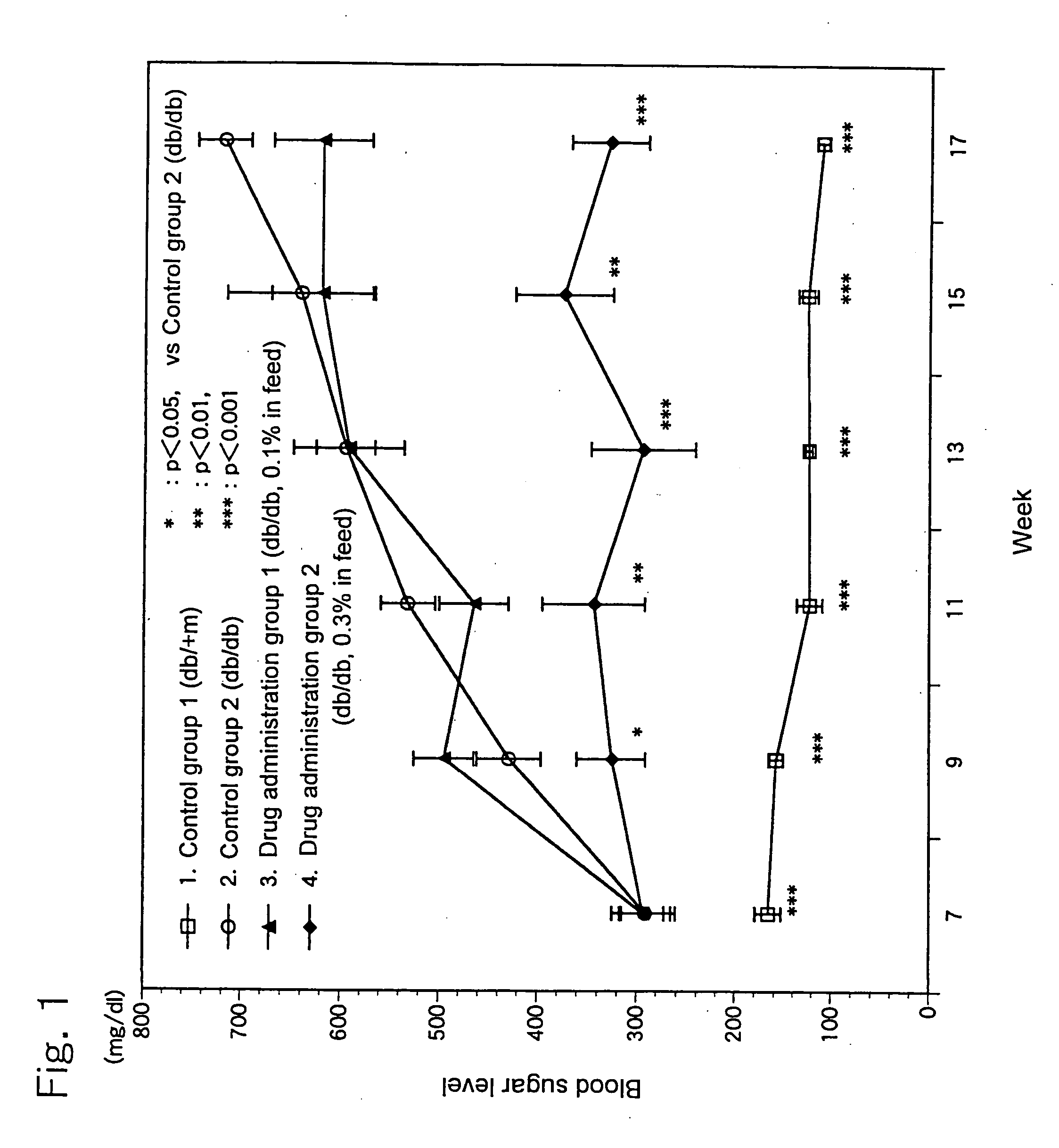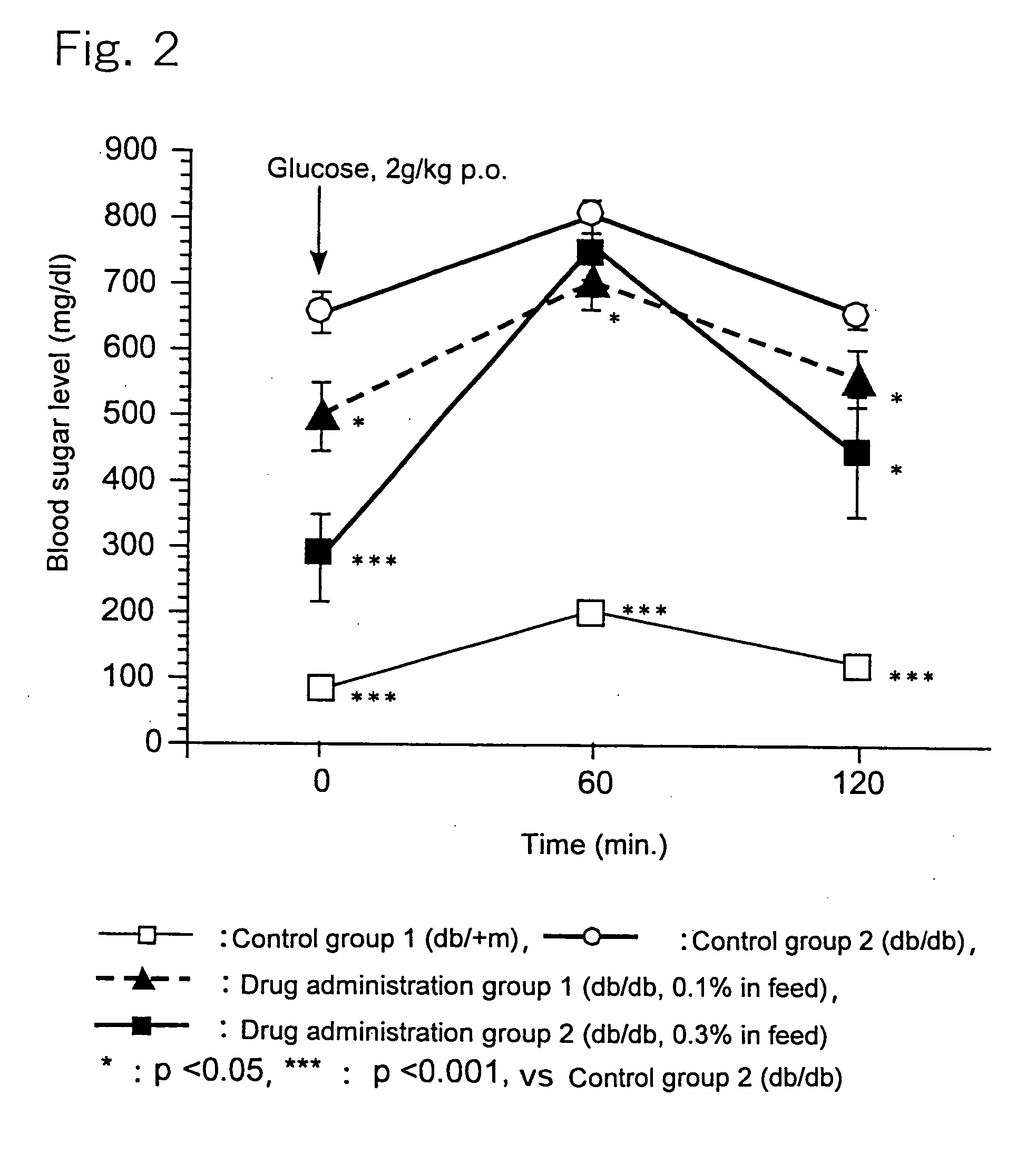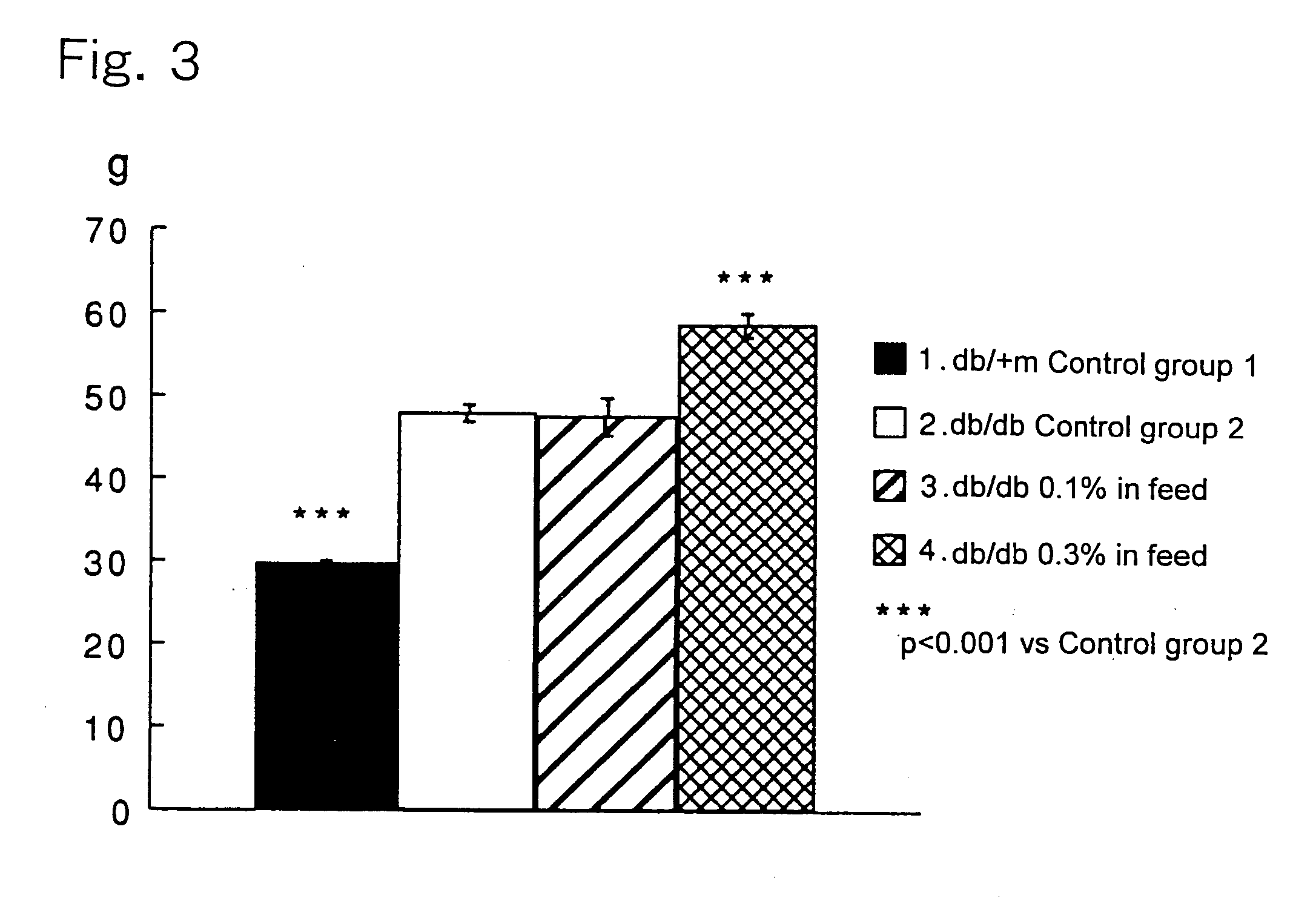Hypoglycemic agent
a technology of hypoglycemic agent and glucose, applied in the direction of steroid, medical preparations, metabolism disorders, etc., can solve the problems of increased free fatty acid in blood, further aggravating diabetes, glucose toxicity, etc., and achieve remarkable hypoglycemic action and high safety.
- Summary
- Abstract
- Description
- Claims
- Application Information
AI Technical Summary
Benefits of technology
Problems solved by technology
Method used
Image
Examples
examples
[0022] The present invention will be more specifically explained with reference to the following examples. However, the scope of the present invention is not limited to these examples.
(1) Materials for Experiments
[0023] 5-Campesten-3-one was prepared as 24-alkylcholesten-3-one. 5-Campesten-3-one was prepared by the method of Shimizu et al. (Takeshi Shimizu et al., Method for synthesis of steroids: Japanese Patent Unexamined Publication (KOKAI) No.(Hei) 11-205889) using campesterol as a starting material (purity not less than 98%, Tama Biochemical Co., Ltd.).
(2) Experimental Animal and Condition for Bleeding
[0024] 6-Week old c57BL db / db male mice, as being a Type-2 diabetes model animal having homozygote diabetes pathogenic gene (db), were divided in three groups each consisting of 10 animals. A group of healthy c57BL db / +m male mice (10 animals) having heterozygote db gene was used as a control group. The animals were housed in plastic cages for mice a...
PUM
| Property | Measurement | Unit |
|---|---|---|
| temperature | aaaaa | aaaaa |
| urinary concentrations | aaaaa | aaaaa |
| weight loss | aaaaa | aaaaa |
Abstract
Description
Claims
Application Information
 Login to View More
Login to View More - R&D
- Intellectual Property
- Life Sciences
- Materials
- Tech Scout
- Unparalleled Data Quality
- Higher Quality Content
- 60% Fewer Hallucinations
Browse by: Latest US Patents, China's latest patents, Technical Efficacy Thesaurus, Application Domain, Technology Topic, Popular Technical Reports.
© 2025 PatSnap. All rights reserved.Legal|Privacy policy|Modern Slavery Act Transparency Statement|Sitemap|About US| Contact US: help@patsnap.com



